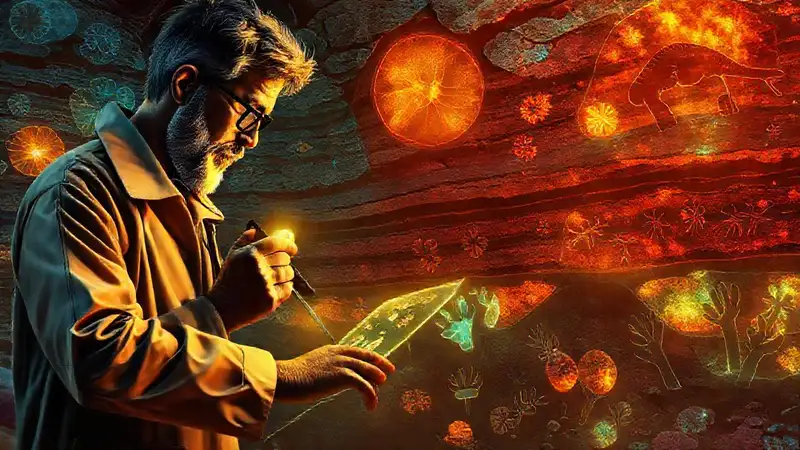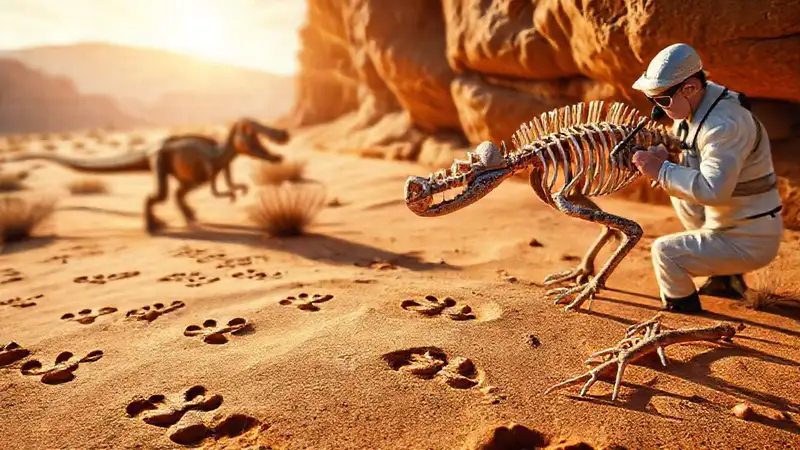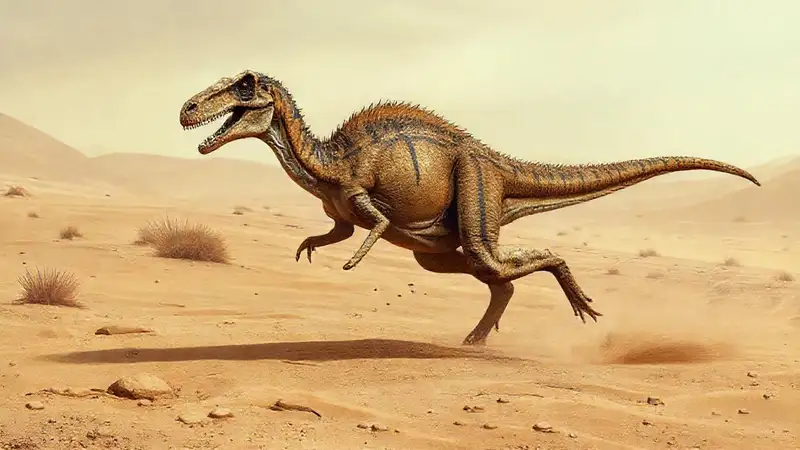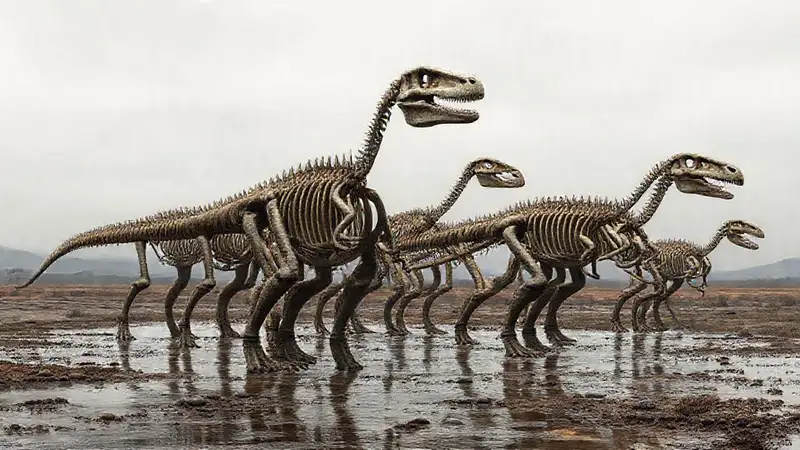Paleontologists have long been fascinated by the social lives of dinosaurs, attempting to reconstruct their behaviors and interactions through fossil evidence. Traditionally, inferences have relied heavily on skeletal morphology – size, bone density, and even trace fossils like footprints – offering glimpses into potential group sizes and activities. However, these methods are often subjective and can be difficult to interpret definitively. More recently, advances in stable isotope geochemistry have opened a powerful new window into dinosaur diets and, crucially, their resource-sharing behaviors. This approach provides a more objective and quantifiable dataset that can revolutionize our understanding of how dinosaurs lived and interacted. By analyzing the ratios of different isotopes in fossilized bones, we can determine what they were eating and, potentially, with whom they shared those resources.
Isotope analysis is particularly valuable because it provides a biochemical record, a ‘fingerprint’ of an animal’s past diet and physiological state. These fingerprints are relatively stable and can be preserved for millions of years, offering a unique opportunity to explore behaviors that are otherwise lost to time. This research isn’t about simply identifying what a dinosaur ate, it's about investigating how they ate and, importantly, who else was part of that feeding process. This research is laying the foundation for a more nuanced and evidence-based approach to understanding dinosaur social structures.
Dietary Isotope Patterns and Juvenile Dinosaurs
The initial evidence for shared resources came from studies on juvenile dinosaurs. Researchers focused on the strontium isotope ratio (⁸⁷Sr/⁸⁶Sr) in the bones of juvenile Parasaurolophus, a ceratopsian dinosaur. The strontium isotope ratios are linked to the geology of the dinosaur's environment, providing a proxy for the local rock composition and, consequently, the plants they consumed. What surprised scientists was that the strontium ratios in juvenile Parasaurolophus from the Dinosaur Park Formation (Alberta, Canada) were remarkably consistent across individuals, despite the varying sizes and ages of the juveniles.
This consistency strongly suggests that these young dinosaurs were feeding on the same limited range of plants. Furthermore, analysis of carbon and nitrogen isotopes further supported this idea, indicating that they were consuming predominantly the same type of vegetation – likely low-lying ferns and cycads. The implication is that these juveniles weren't fiercely competing for food, and instead, were likely living in a socially connected group where resources were shared, at least to some degree. This challenges the traditional view of juvenile dinosaurs as entirely solitary foragers.
Importantly, the juvenile Parasaurolophus displayed a less pronounced dietary variability compared to adults. This suggests that as they matured, their feeding habits might have become more specialized, potentially leading to greater competition for resources. However, the early evidence clearly indicates a level of resource sharing among young dinosaurs that demanded further investigation. The study highlighted a fundamental aspect of dinosaur life: cooperation at a vulnerable life stage.
Moving beyond juveniles, research has broadened to include adult dinosaurs. The study of Albertosaurus sarcophagus provided further compelling evidence. Analyzing the strontium and oxygen isotope ratios in the bones of adult Albertosaurus, researchers found strong correlations between individual bone growth rates and the strontium ratios of their feeding grounds. This revealed a clear pattern: adults were utilizing specific areas of the landscape, exhibiting territoriality, but simultaneously sharing access to the most nutrient-rich portions of these territories.
These findings suggest that adults weren't entirely isolated foragers; instead, they maintained defined territories within a larger, shared ecosystem. The isotopic data indicated a gradient of nutrient availability across the landscape, with the most productive areas being fiercely defended by individual adults. However, the data also suggests a degree of overlap and resource sharing, particularly regarding the less profitable, yet still viable, areas within these territories. This suggests a complex system of localized competition and collaborative use of resources.
Further research, incorporating paleobotanical data (studying the plants found in those territories), helps to paint a more complete picture. The combination of isotopic analysis and plant evidence clearly demonstrates that adult dinosaurs weren’t simply solitary hunters; rather, they engaged in a nuanced strategy of territoriality and resource management, likely driven by social dynamics.
Isotope Signatures in Fossilized Tooth Wear

Traditionally, tooth wear has been used to infer diet. However, isotope analysis provides a complementary and potentially more refined method. Recent work on hadrosaur teeth, focusing on the nitrogen isotope ratios, has revealed another layer of information. The nitrogen isotope ratio varies with the protein content of the diet; higher nitrogen ratios indicate a diet rich in protein, typically from animal sources.
Analyzing tooth wear alongside nitrogen isotopes revealed a fascinating connection. Hadrosaurs with greater tooth wear, indicating a more extensive feeding range, consistently exhibited lower nitrogen isotope ratios compared to those with less tooth wear. This suggests that those with more worn teeth were actively seeking out a greater variety of food sources, including potentially smaller prey or tougher plant parts. The combined data provided a more complete picture of their feeding ecology, demonstrating a link between foraging behavior, dietary variation, and social interaction.
This methodology allows researchers to differentiate between individuals based on their feeding strategies and suggests that differences in tooth wear might reflect varying levels of social engagement and resource exploitation. It highlights the potential of integrating multiple lines of evidence for a more comprehensive understanding of dinosaur behavior.
Connecting Isotopic Data with Trace Fossils
Finally, researchers are increasingly linking isotope data with trace fossil evidence, such as footprints and trackways. A study examining Edmontosaurus footprints in the Dinosaur Park Formation combined isotopic analysis with the spatial distribution of these tracks. The analysis revealed that Edmontosaurus herds often congregated in specific areas with lower strontium isotope ratios, indicating a preference for areas with certain plant types. Furthermore, tracks clustered around these areas suggest a high level of social interaction and coordinated foraging.
The combination of isotopic data and trackway analysis provides powerful evidence for collaborative feeding behavior. It suggests that Edmontosaurus herds were not simply random aggregations of individuals but were actively selecting specific feeding grounds as a group, likely for resource optimization and predator avoidance. These findings support the idea of complex social structures within dinosaur herds, where individuals actively influenced each other's foraging strategies. This is a crucial step toward understanding the complexity of dinosaur sociality.
Conclusion
Isotopic analysis has undeniably revolutionized our understanding of dinosaur social structures, offering a powerful tool to investigate resource sharing and dietary habits beyond traditional morphological assessments. The evidence presented – from juvenile dietary consistency to adult territoriality and herd foraging behaviors – points to a far more socially integrated dinosaur world than previously imagined. These analyses are pushing us to reconsider the simplistic view of dinosaurs as solitary creatures, revealing nuanced strategies of cooperation and competition.
The integration of multiple lines of evidence, including isotopes, paleobotany, and trace fossils, is crucial for constructing a more complete picture of dinosaur social life. Looking ahead, advancements in analytical techniques and the discovery of new fossil sites will undoubtedly yield even more sophisticated insights into the fascinating social lives of these magnificent creatures, providing a more holistic and accurate representation of their past.






Deja una respuesta